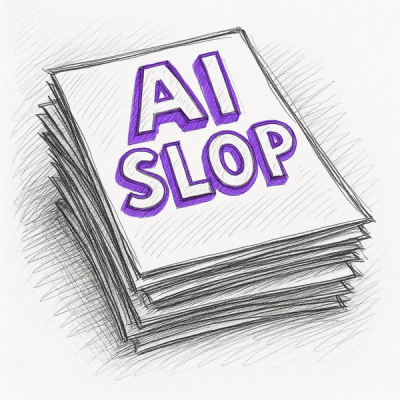
Security News
Potemkin Understanding in LLMs: New Study Reveals Flaws in AI Benchmarks
New research reveals that LLMs often fake understanding, passing benchmarks but failing to apply concepts or stay internally consistent.
.. image:: https://badge.fury.io/py/array-to-latex.png/ :target: http://badge.fury.io/py/array-to-latex
.. image:: https://img.shields.io/badge/Say%20Thanks-!-1EAEDB.svg :target: https://saythanks.io/to/josephcslater
.. image:: http://pepy.tech/badge/array-to-latex :target: http://pepy.tech/project/array-to-latex :alt: PyPi Download stats
.. image:: https://mybinder.org/badge_logo.svg :target: https://mybinder.org/v2/gh/josephcslater/array_to_latex/master?filepath=Examples.ipynb
The module array_to_latex converts a NumPy/SciPy array or Pandas Numerical DataFrame to a LaTeX
array or table using Python 3.x style_ formatting of the result or a format usable for plotting within LaTeX using pgfplots. Note that as of 0.83 it does add
the column formatting arguments (for example, {ccc...}) when the user chooses to use array. I'm happy
to have someone create a better solution but this at least makes a copied array immediately usable. I
prefer bmatrix or similar. `
Play with it on mybinder.org_!
A NumPy-focused re-envisioned converter based, in part, on this is
numpyarray_to_latex <https://github.com/benmaier/numpyarray_to_latex>_. Also, available
pip install. It incorporates more sophisticated "sub" markup capabilities. Check it out!
Recent updates follow, with a more complete list towards the end of this document. If you don't see the current version in this list it's likely because I (again) forgot to update it when pushing out a new version. Please see the readme_ on GitHub.
| 0.81: Bug fixes in requirements and to_clp
| 0.82: Raise ImportError exception when incorrect datatype used.
| 0.83: Now puts a default format in when returning as an array object.
| 0.90: Add coords format for use in plotting within LaTeX using pgfplots.
| 0.91: Improve the output for scientific e notation.
| 0.92: Allow np.array consisting of strings to be converted (Thanks to Tesla2000)
Install using pip install --user array_to_latex from your command prompt, not the Python prompt.
Please read the help. It explains all options. To try it, see the online mybinder.org demo <https://mybinder.org/v2/gh/josephcslater/array_to_latex/master?filepath=Examples.ipynb>_. It documents illustrates application to numerical Pandas DataFrames.
.. code:: python
import numpy as np
import array_to_latex as a2l
A = np.array([[1.23456, 23.45678],[456.23, 8.239521]])
a2l.to_ltx(A, frmt = '{:6.2f}', arraytype = 'array')
will print the LaTeX code to your output.
.. code:: python
import numpy as np
import array_to_latex as a2l
A = np.array([[1.23456, 23.45678],[456.23, 8.239521]])
latex_code = a2l.to_ltx(A, frmt = '{:6.2f}', arraytype = 'bmatrix', print_out=False)
will put the LaTeX code into variable latex_code.
.. code:: python
import numpy as np
import array_to_latex as a2l
A = np.array([[1.23456, 23.45678],[456.23, 8.239521]])
a2l.to_clp(A, frmt = '{:6.2f}', arraytype = 'bmatrix')
will put the array onto your clipboard.
If you will be using the same conversion over and over, you can define your own by using a lambda function:
.. code:: python
to_tex = lambda A : a2l.to_ltx(A, frmt = '{:6.2f}', arraytype = 'bmatrix', mathform=True)
to_tex(A)
so you can now use your function to_tex repeatedly with your specified settings. More detailed information on usage is in the help.
.. code:: python
import array_to_latex as a2l
help(a2l.to_ltx)
Interesting alternative approaches are np_array_to_latex <https://github.com/bbercovici/np_array_to_latex>_ and tab2latex (convert numpy array to longtable file) <https://pypi.org/project/tab2latex/>_.
Like this module, buy me a coffee! <https://www.buymeacoffee.com/s6BCSuEiU>_.
| New in 0.37: Now handles complex arrays.
| New in 0.38: Aligns columns neatly.
| 0.40: Critical upgrade- 0.37-0.38 formatted incorrectly.
| 0.41: Critical upgrade- 0.37-0.40 formatted incorrectly.
| New in 0.43: Now handles 1-D Arrays. See new option row
| New in 0.50: Now works with Pandas DataFrames
| 0.51: Bug fix- remove extra blank lines in DataFrame tabular output
| 0.52: A few documentation typos fixed. No code changed.
| 0.60: Now handles strings in Pandas Dataframes. Fixes bug in exponentials and handling of exponentials. Please report errors!
| 0.61: Minor documentation improvements. No code changed.
| 0.70: Added mathform. When set to True (default), returns 10 to superscript form.
| 0.71: Line breaks broke readme.rst on pypi. No code change.
| 0.72: Line breaks broke readme.rst on pypi. No code change.
| 0.73: pypi won't handle mathjax. It makes me sad. No code change.
| 0.74: Not released
| 0.75: output improvements (short-lived release)
| 0.76: Printing made better, allows outputs, added print_out
| boolean to turn off printing
| 0.80: Return to previous interface while still enabling returned
| LaTeX string.
| 0.81: Bug fixes in requirements and to_clp
| 0.82: Raise ImportError exception when incorrect datatype used.
| 0.83: Add formatting defaults when using array versus bmatrix, etc.
| 0.90: Add coords format for use in plotting within LaTeX using pgfplots.
| 0.91: Improve the output for scientific e notation.
| 0.92: Allow np.array consisting of strings to be converted (Thanks to Tesla2000)
.. _Python 3.x style: https://docs.python.org/3.7/library/string.html
.. _mybinder.org: https://mybinder.org/v2/gh/josephcslater/array_to_latex/master?filepath=Examples.ipynb
.. _readme: https://github.com/josephcslater/array_to_latex/blob/master/README.rst
FAQs
Return Numpy and Pandas arrays as formatted LaTeX arrays.
We found that array-to-latex demonstrated a healthy version release cadence and project activity because the last version was released less than a year ago. It has 1 open source maintainer collaborating on the project.
Did you know?

Socket for GitHub automatically highlights issues in each pull request and monitors the health of all your open source dependencies. Discover the contents of your packages and block harmful activity before you install or update your dependencies.

Security News
New research reveals that LLMs often fake understanding, passing benchmarks but failing to apply concepts or stay internally consistent.

Security News
Django has updated its security policies to reject AI-generated vulnerability reports that include fabricated or unverifiable content.

Security News
ECMAScript 2025 introduces Iterator Helpers, Set methods, JSON modules, and more in its latest spec update approved by Ecma in June 2025.